What American homes looked like in the decade you were born
Step inside the homes of yesteryear
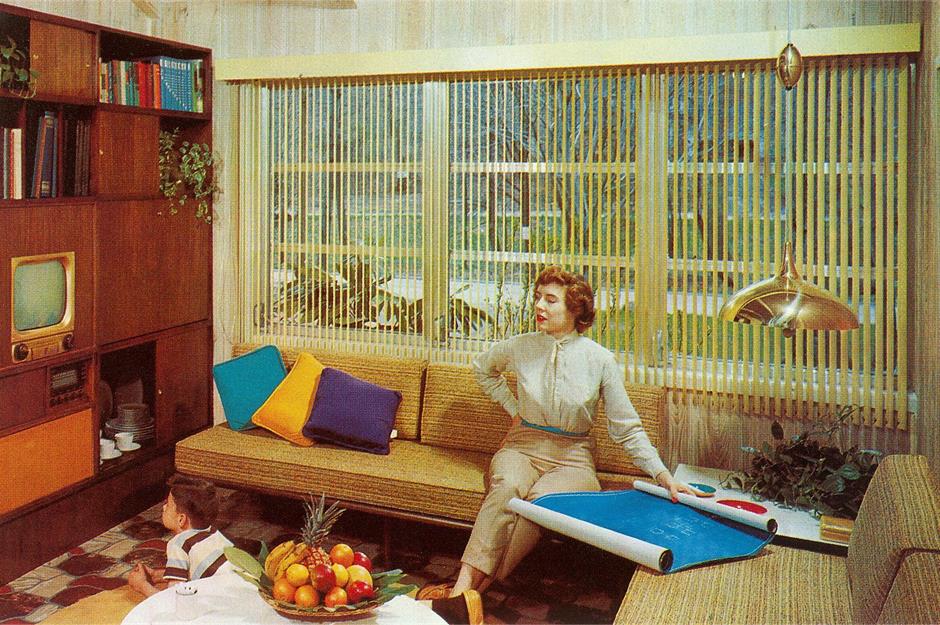
Over the last century, American homes have changed dramatically in both the way they look and function. From decorating styles to new technology, the timeline of house design has been constantly on the move.
So, whether you're a baby boomer or first-wave millennial, click or scroll to take a trip down memory lane...
The 1940s house

With half of the 1940s taken over by World War II, the average house was far from affluent. 'Make do and mend' was the order of the day, and with rationing and shortages still widespread, homes still bore the hallmarks of the previous decade's style.
As the war ended and the great rebuilding program began, the demand for housing increased rapidly, and many new homes were built on the outskirts of towns, creating the modern suburbs.
1940s: the living room
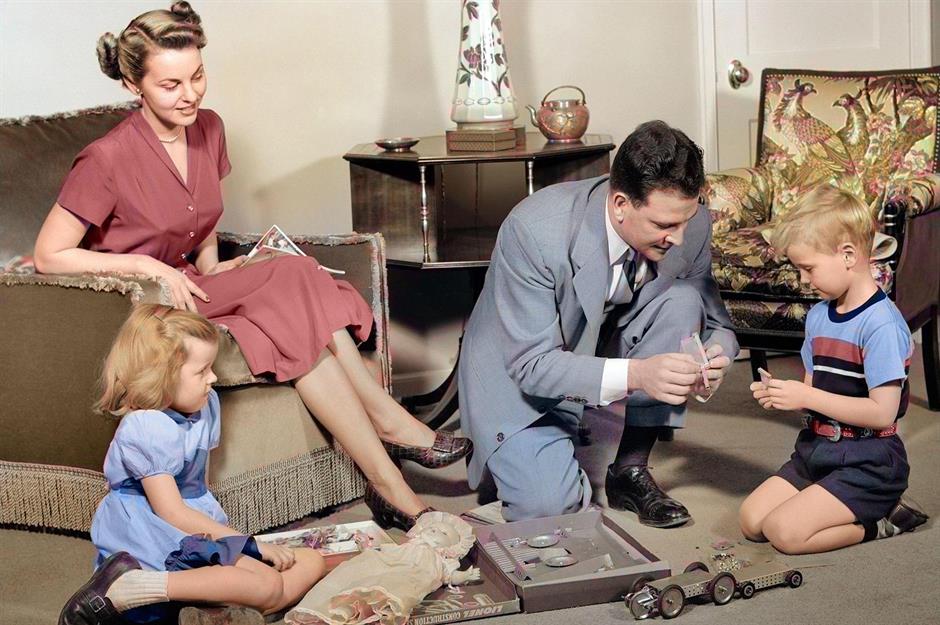
With the war coming to an end in 1945, home interiors in the first half of the decade were largely still stuck in the 1930s. Properties were awash with floral prints, old-fashioned homewares, and traditional dark wood furnishings.
In the living room, entertainment consisted of listening to the radio or record player, while a shortage of material meant old clothes and soft furnishings had to be adapted and repaired.
1940s: the kitchen
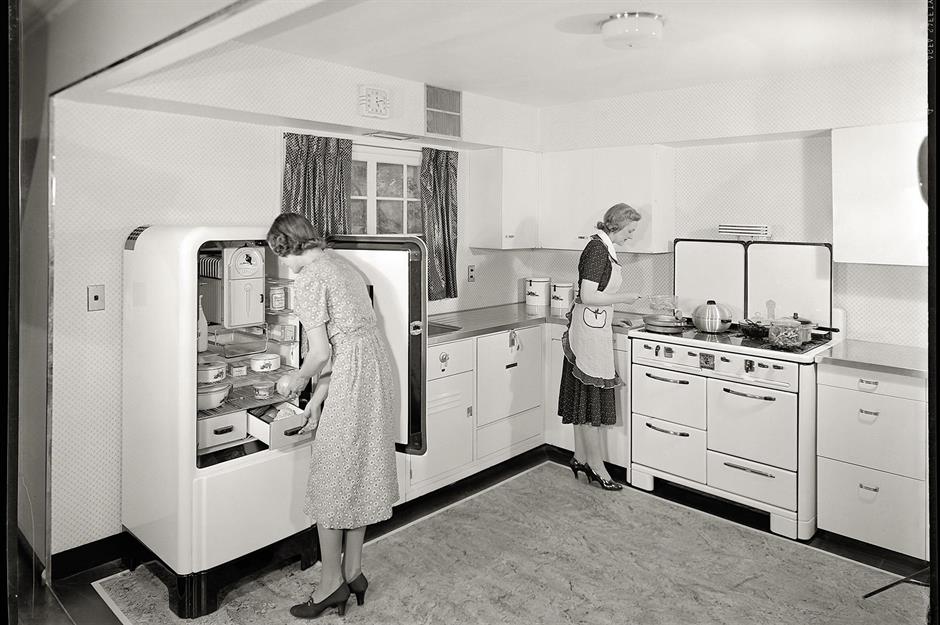
In the 1940s, your kitchen would probably have been small and simple in comparison to what we’re used to today. Pastel colours and two-tone cabinets were popular, as well as brighter tones like this sunny yellow.
As more people started to own larger appliances like fridge-freezers, more spacious layouts were designed to accommodate them.
1940s: the bathroom

With a focus on cleanliness still lingering from the turn of the century, sanitaryware was typically white. Square tiles were often used to line the walls around the bath and basin, with the upper portion of the wall painted.
Linoleum was the exciting new floor covering of choice in the 1940s and the classic black and white checkerboard pattern was especially popular.
1940s: the bedroom
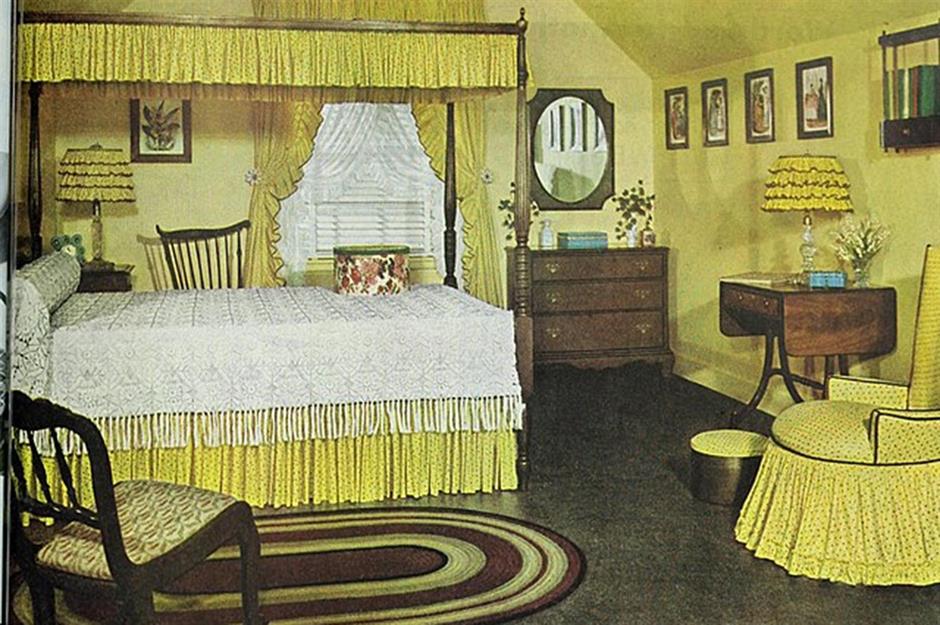
In this 1940s bedroom, you'll find more traditional dark wood furniture, from the dressing table to the bed frames. A familiar sight to anyone who grew up in this decade, chintzy floral-print curtains hang in the window, while vibrant yellows flow from the walls to the soft furnishings.
These dust ruffles, seen around the bed and chair, must have seemed like the height of luxury, adding a touch of Hollywood glamor.
The 1950s house
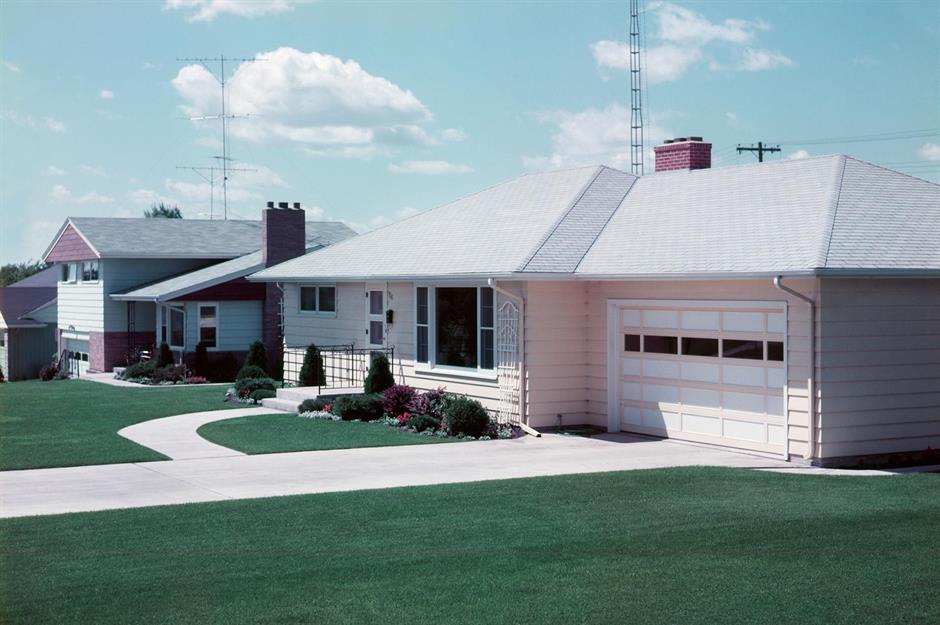
In the 1950s, the economic picture was much rosier. It was a boom time for industry and consumer wealth, which spurred on great leaps in terms of design and modern tastes.
House building moved away from traditional styles to more modernist designs, with clean angular lines, swaths of windows, and sliding glass doors to draw the outside in.
House façades from this era tended to feature very little ornamentation, and outdoor space became more polished.
1950s: the living room
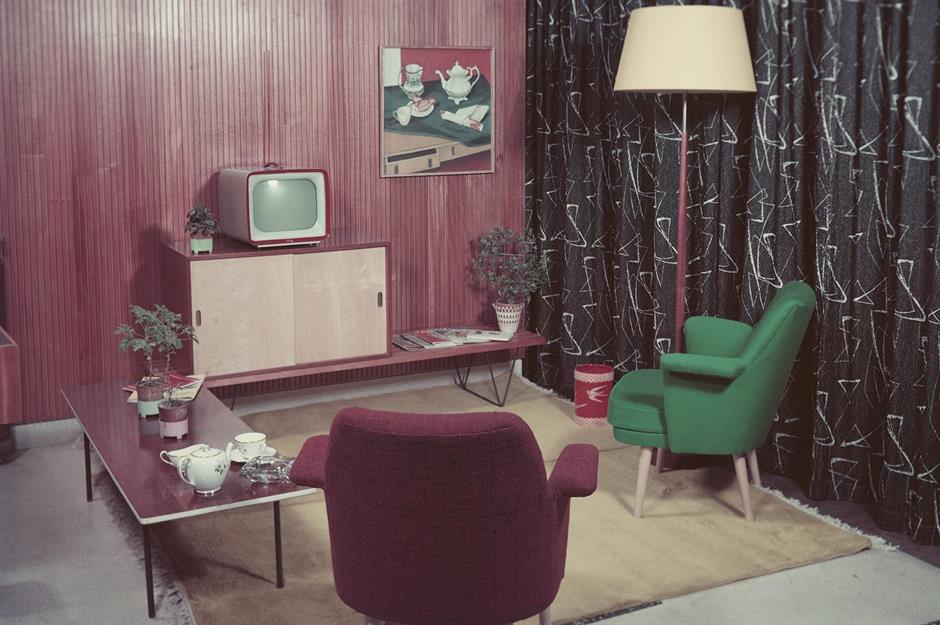
If you grew up in the 1950s, this is where you would have listened to music, watched TV, spent time with your family, and entertained guests.
Typically, the colour palette of a vintage living room consisted of pastel hues, with bold shades incorporated across accessories, like the vibrant green chair pictured here.
When it came to upholstery, heavy textures in earthy browns and greens were all the rage, while busy patterns were commonplace too.
1950s: the kitchen
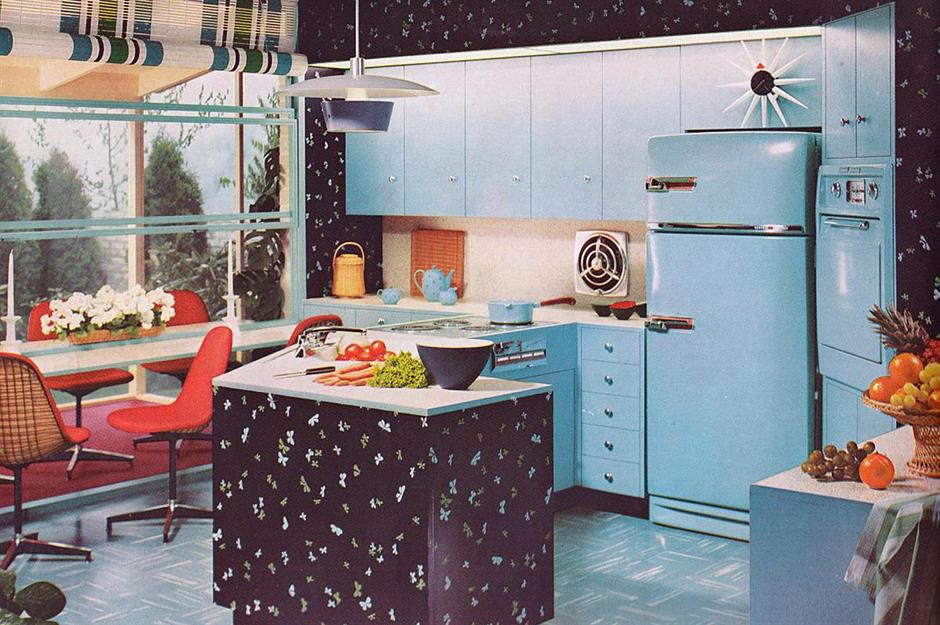
This kitchen features all the essential 1950s design elements, colourful kitchen units, chrome and vinyl chairs, and Formica worktops.
As in the 1940s, linoleum was a popular floor covering, but manufacturers started to redesign it with bright, bold patterns to make it less utilitarian.
1950s: the bathroom
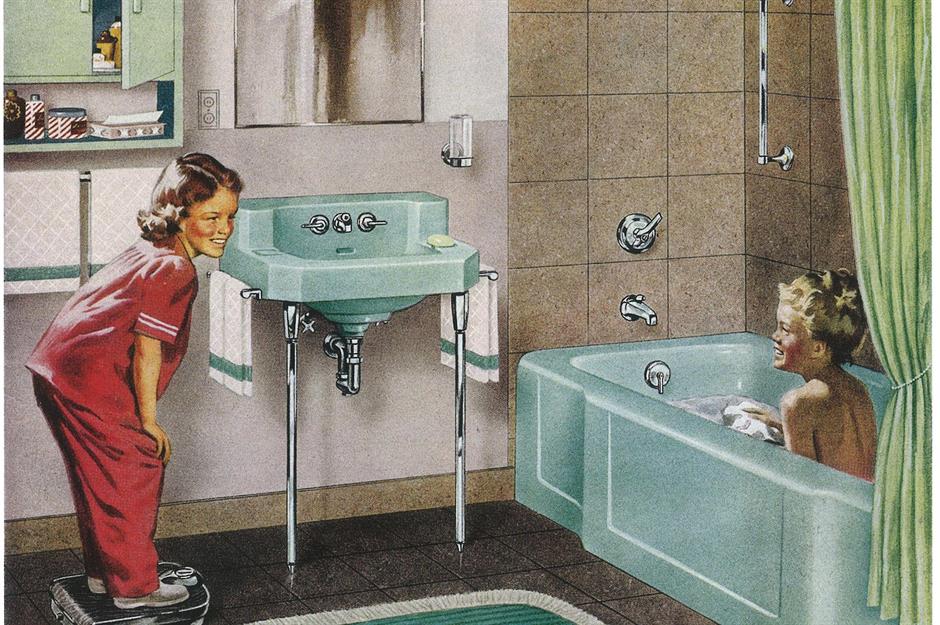
A popular hue for vintage bathrooms, the blue suite has a love or hate place in the hearts of 1950s kids.
Coloured sanitaryware in pastel shades also became fashionable at this time, a trend which continued well into the 1980s.
Colour coordination was a must, while wipeable tiling found its way onto countertops and bathroom vanities.
1950s: the bedroom

More prosperous than the previous decade, there was a greater emphasis on comfort in the 1950s. Bedrooms were colourful, luxurious spaces, with bold schemes and glitzy wallpaper.
Wall-to-wall carpeting also emerged as an opulent new trend around this time. More households owned TVs too, so entertainment was at the fingertips of homeowners like never before.
The 1960s house
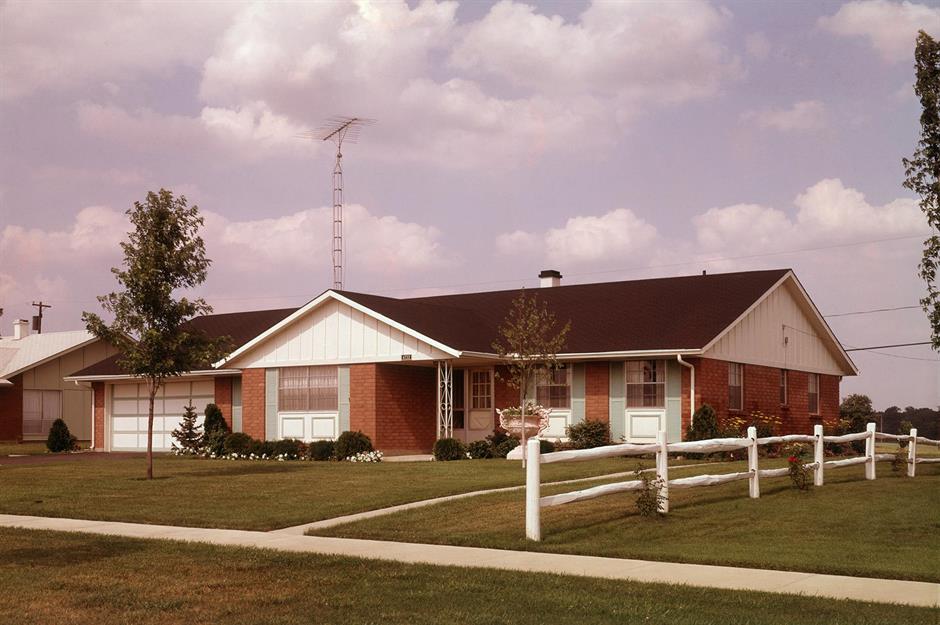
If you grew up in a 1960s house, you may have lived in a smart new build house like this. These designs borrowed from the traditional styles of the past but came with shiny new modern additions.
Cars were increasingly relied upon for day-to-day life, so this house has a built-in double garage and concrete driveway.
1960s: the living room

The 1960s were a time of cultural revolution and change, reflected in a vibrant new interior style.
If you were around in this psychedelic decade, your home would've been transformed with an array of bright colours and the new obsession with shag carpets, which were far denser than previous kinds.
Modern Danish furniture was also in vogue, which influenced the architectural shape of these sofas and chairs.
1960s: the kitchen
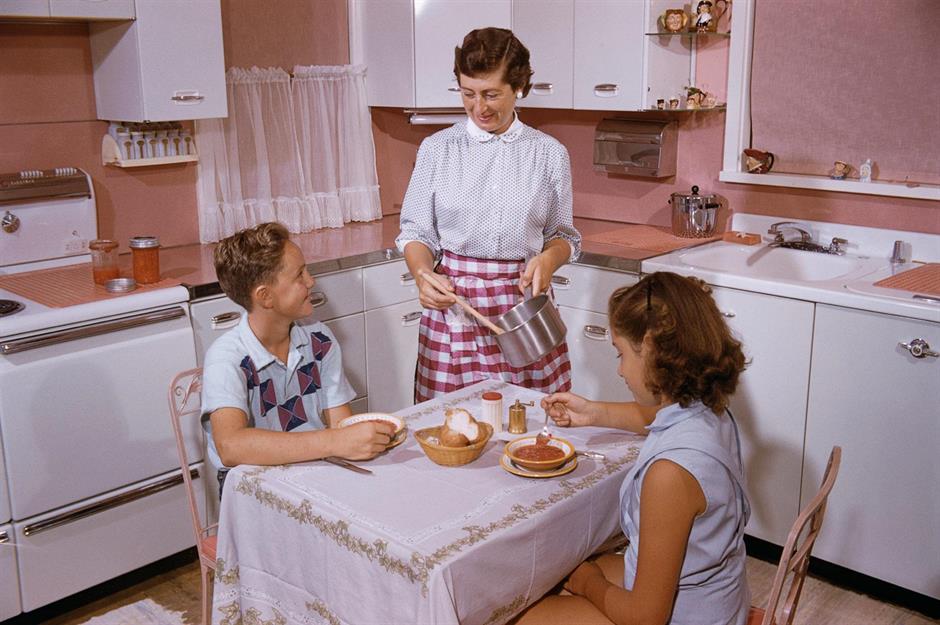
This modernist kitchen showcases two major interior trends of the 1960s: a pastel colour scheme and chrome fixtures.
Kitchens from this decade would have featured sleek, unfussy cabinets and laminate or Formica worktops. A plethora of new-fangled kitchen appliances for entertaining, such as an electric coffee maker, were available to the average homeowner.
1960s: the bathroom

Bold colours continued into the 1960s bathroom, with coloured bathroom suites. Showers, as well as baths, became a more common choice for homeowners.
1960s: the bedroom
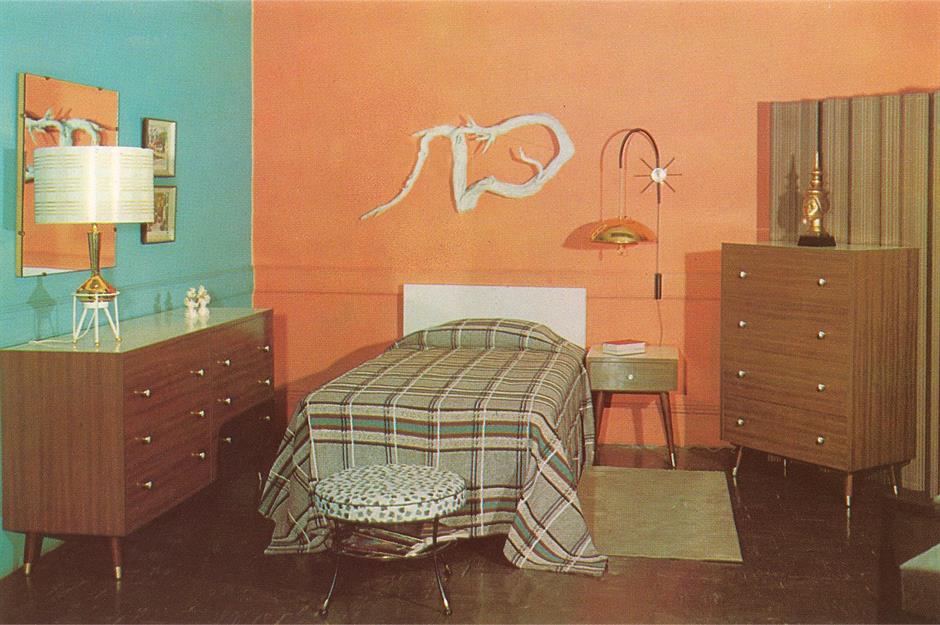
This luxurious vintage bedroom shows off the more flamboyant side of the 1960s, when homes were increasingly treated as status symbols.
The contrasting colour-block walls, statement art, and Scandinavian matching dressers create a luxurious interior scheme typical of the decade.
As homes expanded, so too did the use of built-in storage. Massive bespoke wardrobes with mirrored doors would allow the groovy homeowner to keep their growing wardrobe in check without losing that streamlined style.
The 1970s house
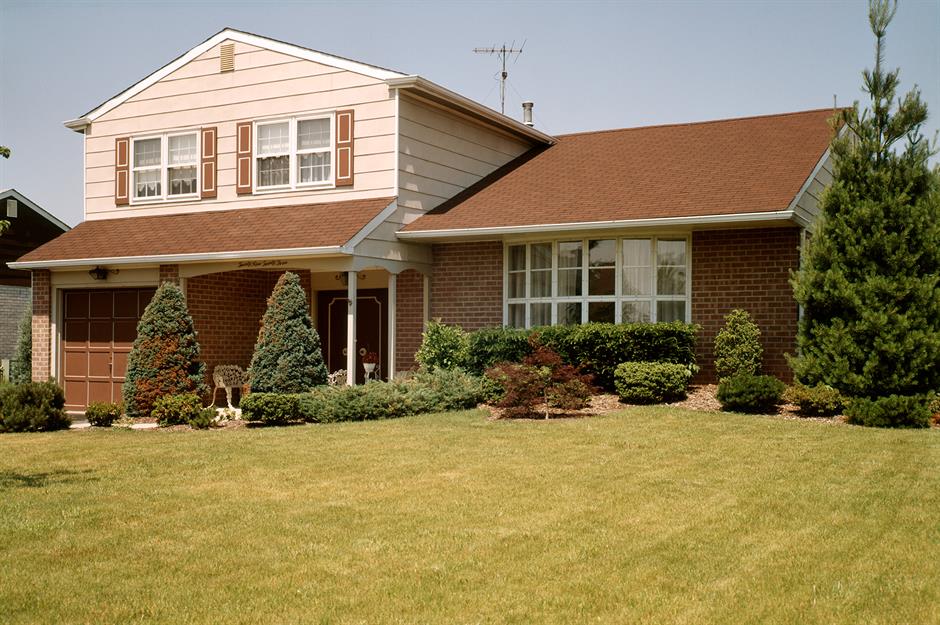
Houses built in the 1970s tend to get a bad rep but they have a lot going for them.
Big-sized rooms, large windows, and plenty of outdoor space made them fabulous family homes, but some of the decorative touches are now considered design pariahs.
Very few ceilings were spared the Artex popcorn treatment (which also sometimes contained asbestos!), and cladding was stylish in a big way.
1970s: the living room
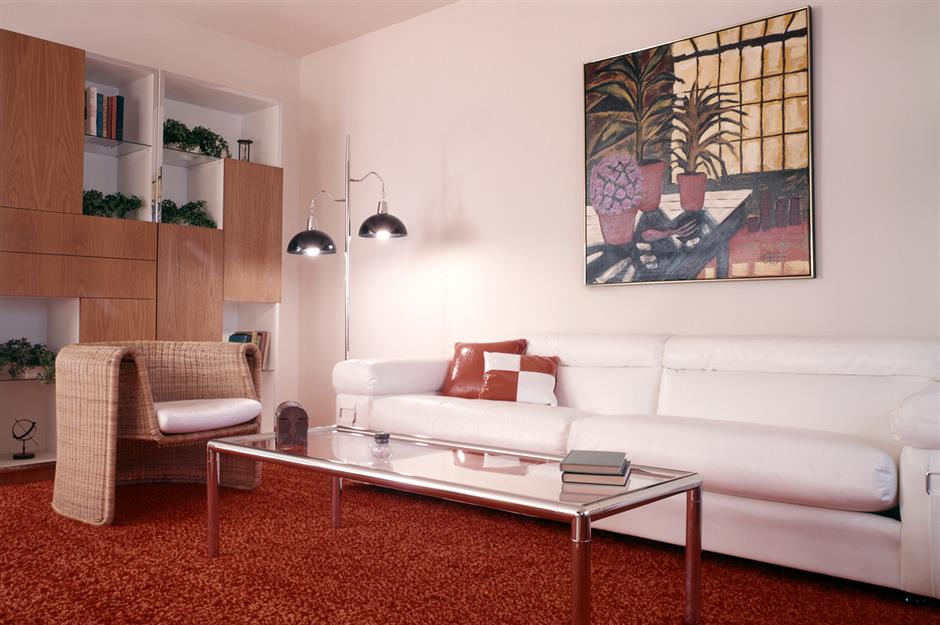
If you are a child of the 1970s, this living room may look very familiar. Wood paneling, shag carpets in vibrant colours, and orange and brown hues were all major trends at the time.
Many rooms also had the textured Artex or popcorn ceiling, ubiquitous in homes of the 1970s.
1970s: the kitchen
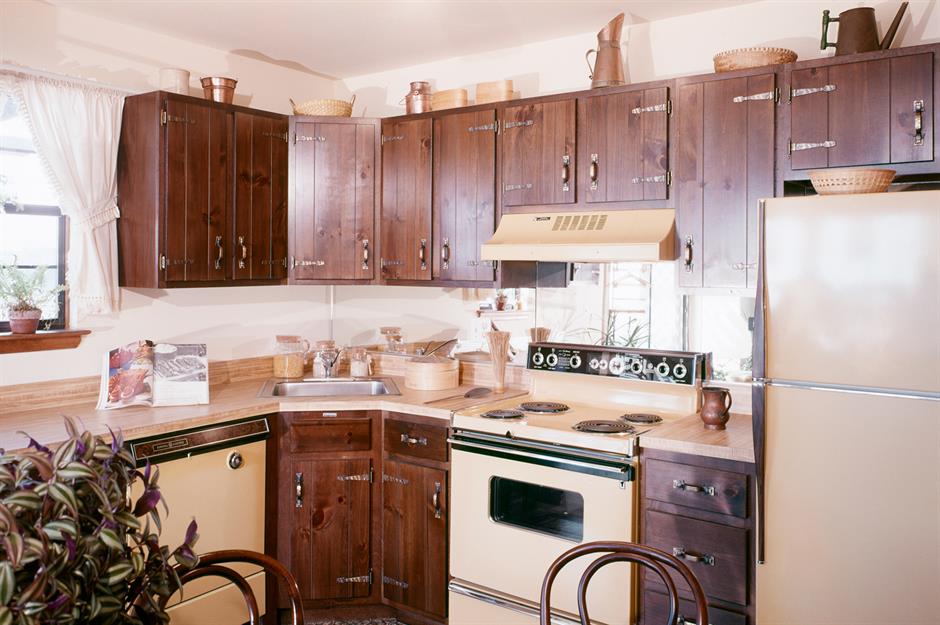
Wooden kitchen cupboards and Formica worktops were a staple of the 1970s kitchen. This bright space features creamy appliances and brass accents.
Plenty of storage, plus the latest appliances, including the first domestic dishwashers, became the new norm in the heart of the home.
1970s: the bathroom
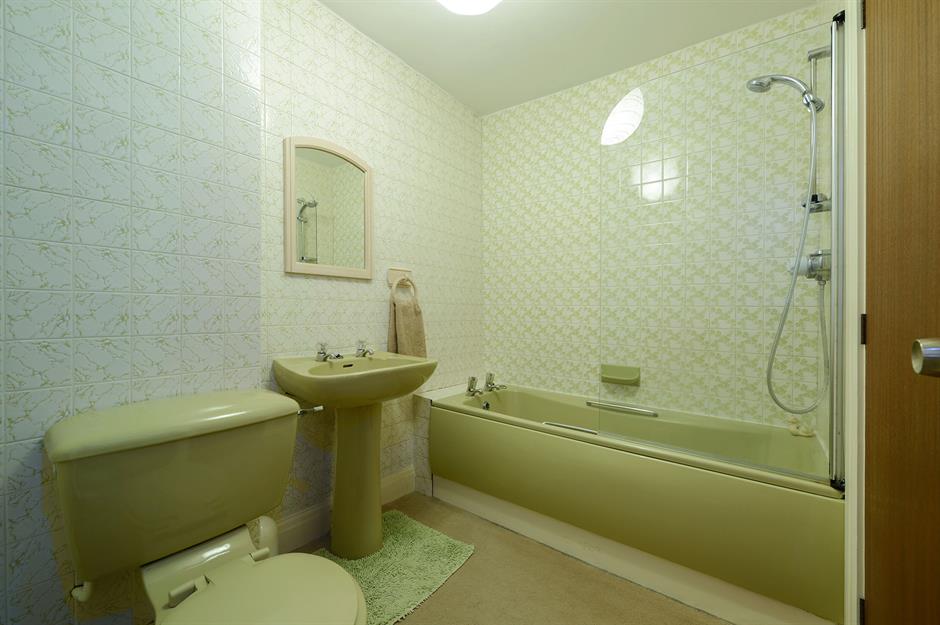
The classic avocado bathroom suite was a much-loved staple of the decade. Here it’s paired with patterned wall tiles. Ceramic tiling was now a common choice for bathroom flooring.
This was also the age of fluffy bathroom rugs, usually one in front of the bath and another around the toilet. Many might remember the fabric-covered tissue-box cover craze with fondness, or a shudder!
1970s: the bedroom
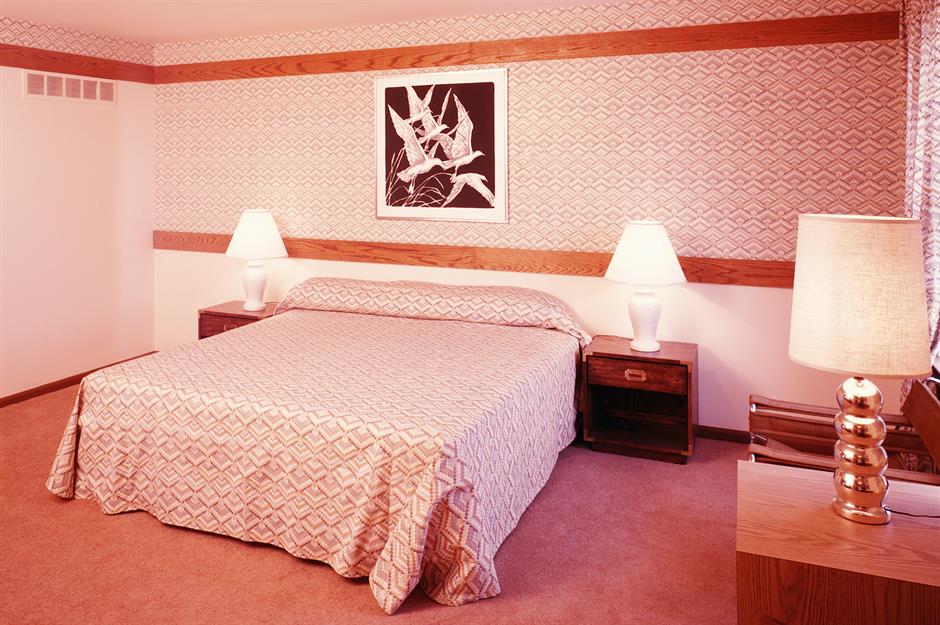
Bedspreads with geometric patterns like this one were a popular trend in the 1970s. This room even features matching curtains and matching wallpaper, too.
Plastic was now a regular choice for furniture production, as was teak wood. Busy carpet, often in loud prints or check, was often used throughout the house as well.
The 1980s house
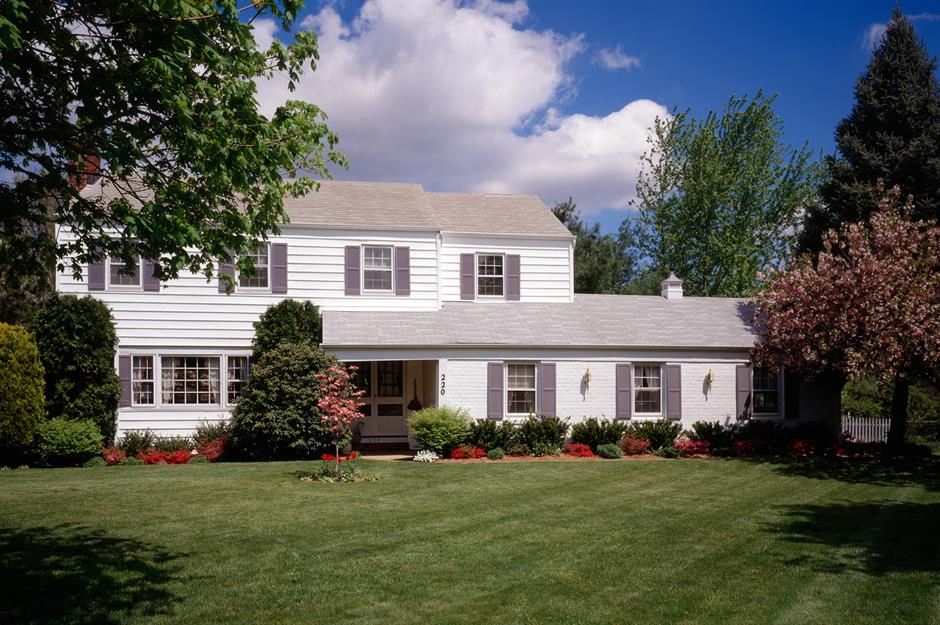
The 1980s saw the rise of the yuppie, a term meaning 'young urban professional' or 'young, upwardly-mobile professional,' so there was a boost in luxury housing and city apartments as huge developments of high-end condos sprang up in financial centres across the world.
This wealth trickled down to the growing middle classes, and so the average family home grew in size and cost.
This house has a double garage for the two cars homeowners would've proudly displayed, plus a smart, manicured front lawn. Kerb appeal was taking off in a big way.
1980s: the living room
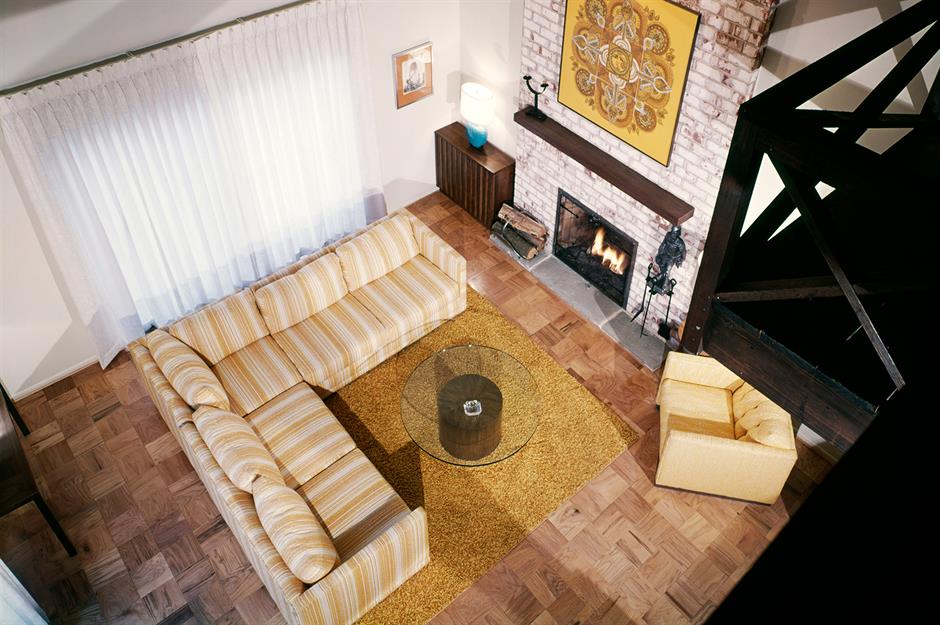
Exposed brick accent walls, particularly around fireplaces, and blocked wooden floors were staples in the 80s, as were pops of bold colour like the yellow pictured here.
Glass was a popular choice for dining and coffee tables along with darker wood furnishings, however, the 1980s also saw the return of pastel colours and chintzy fabrics first popularised in the 1940s.
1980s: the kitchen
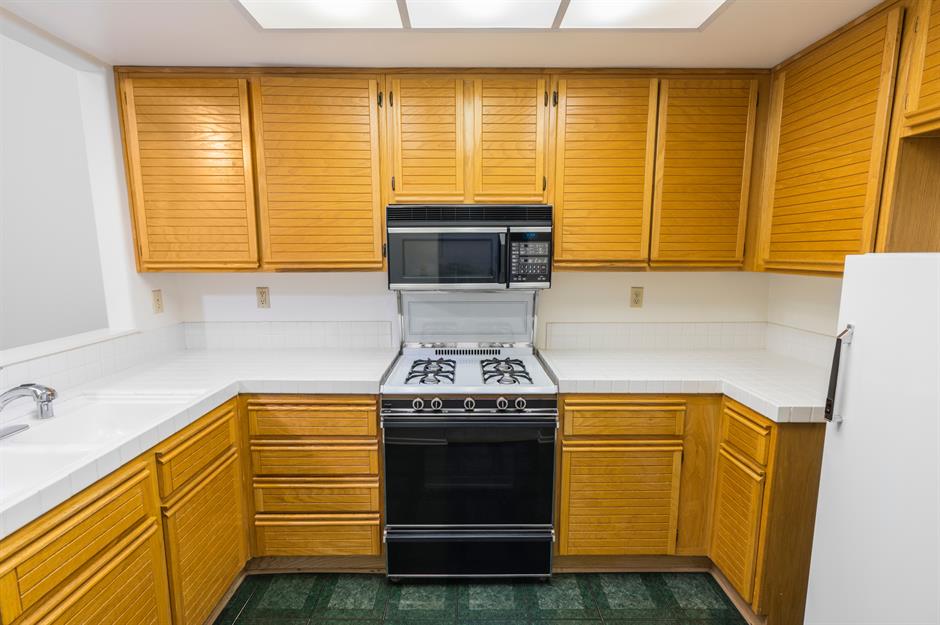
Tiled worktops came back with a vengeance in the 1980s, while appliances, from refrigerators to washing machines and dishwashers, were typically all white.
Oak cabinetry became a popular design choice; these have a streamlined modern look to them, befitting of a decade that saw the first personal computers.
Linoleum floors, like the green patterned one here, were also still in vogue.
1980s: the bathroom
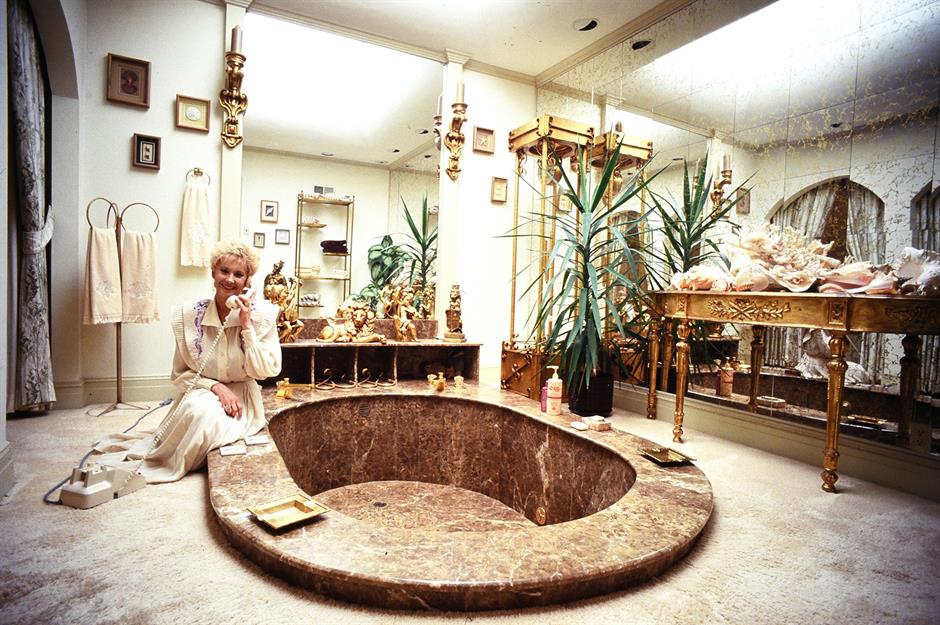
Cutting-edge bathroom design finally turned away from garish colour towards the end of the 1980s. Clean lines and more neutral shades were being reintroduced, meaning white tiles and beige suites were once again in fashion.
Luxury bathrooms to indulge in at the end of a hard working day became the norm, so sunken tubs, power showers, marble and spa-style spaces became the biggest emerging trend.
1980s: the bedroom
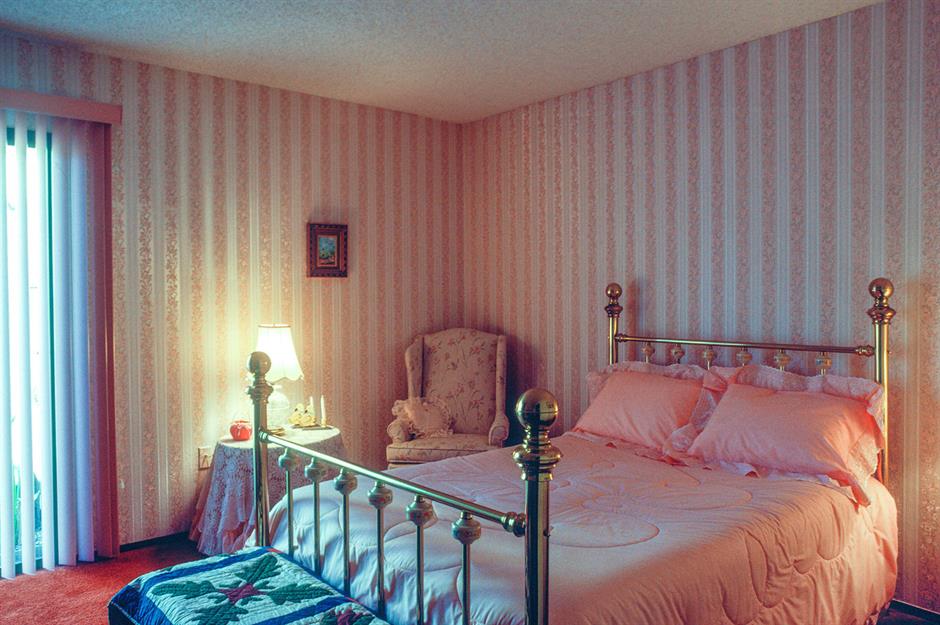
While there was a toning down of vibrant colour later in the decade, it didn't go away completely. Pastels abound in this bedroom, which is decked out in a palette of luminous peach. Just look at that dust ruffle around the bed!
The same zigzag print reappears on the cushions and the oversized fabric headboard. Also a big hit in the 80s, two pine bedside tables complete the retro scheme.
The 1990s house
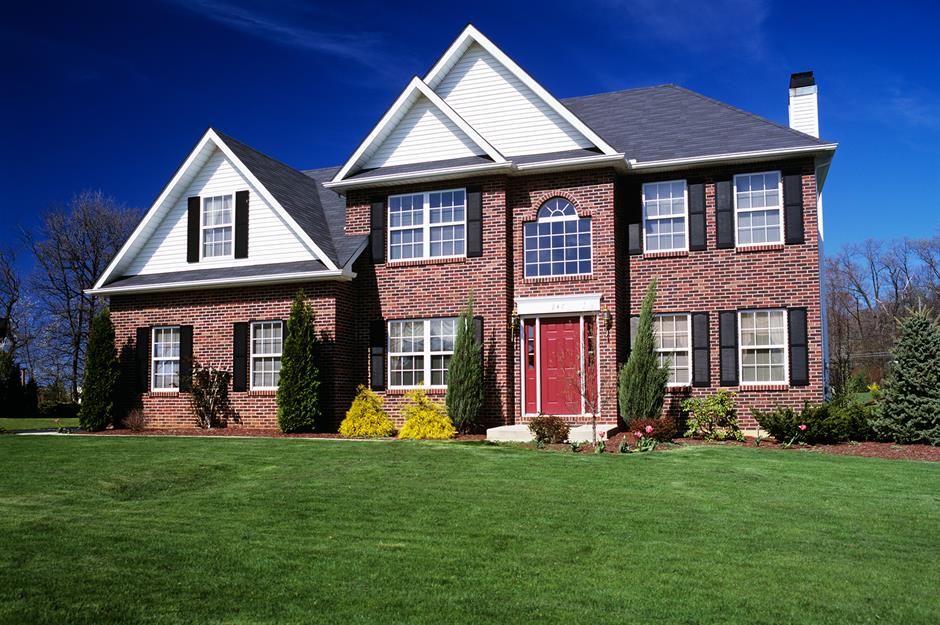
As in the previous two decades, new houses in the 1990s were often a mixture of traditional and modern, perhaps to fit in with the existing houses around them.
Tech really started to take off and our homes were full of home entertainment systems, satellite and cable TV, and games consoles.
It was also the era of home makeovers: TV shows inspired us to tackle bigger renovation projects than ever to add value to our homes during this property boom period.
1990s: the living room

With its plush pink sofas, vibrant floral curtains and cushions, and antique accents, this living room boasts all the fixings of a traditional upper-middle-class home in the 1990s.
Many living rooms in the 90s also showed off their impressive array of home entertainment devices in specially-built shelving units, including big TVs, CD players and large stereo systems.
1990s: the kitchen
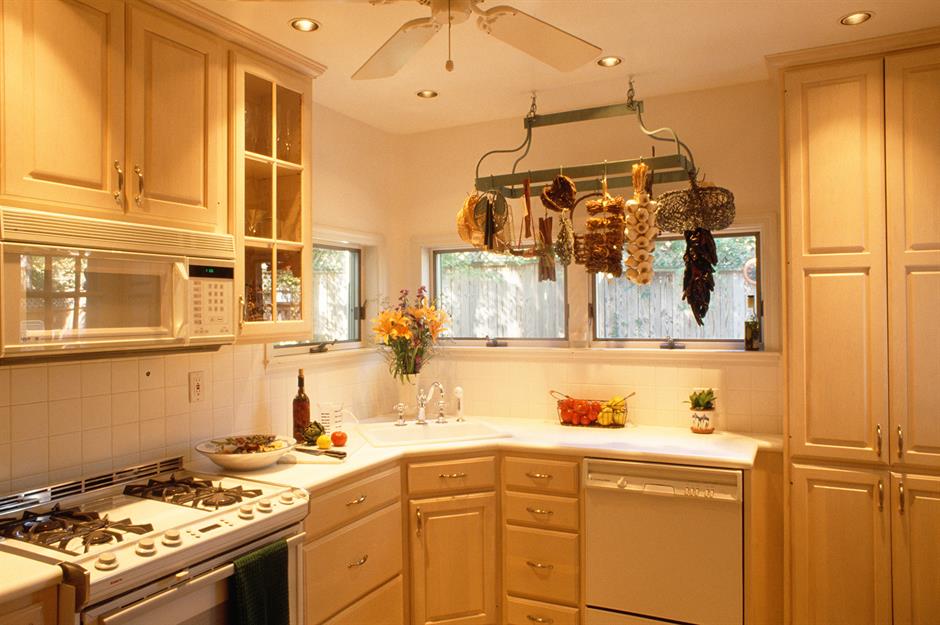
As with today, there are as many styles of kitchens as there are people who use them, and the focus on individual style saw the 1990s kitchen decorated in themes as varied as old English farmhouse to minimal concrete spaces with hidden appliances.
As a rule, wood became paler than in the 1980s; pine and dark wood went out, and pale ash and budget-friendly MDF was in. Lighting became smaller and streamlined with spotlights and probably the most used colour was still the ubiquitous magnolia.
1990s: the bathroom
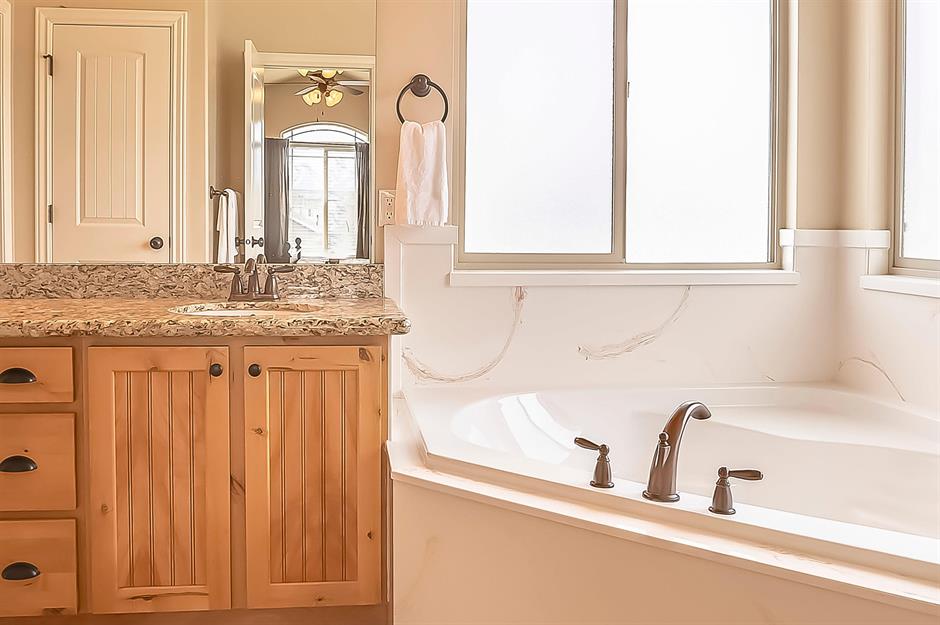
Moving on from the pastel tones of the previous decade, the 1990s signified the rise of beige, even in bathrooms. This space offsets beige tiles against, you guessed it, beige walls.
Corner baths were another must-have home feature. For the ultimate in luxury, you might even have splashed out on water jets, too.
1990s: the bedroom

You don't get much more 1990s than this!
From the aggressively floral bedspread and matching curtains to the basket chair, bedrooms were awash with bold design choices. A simple coat of paint was never enough for a 1990s scheme. Check out the floral border around the ceiling.
The 2000s house
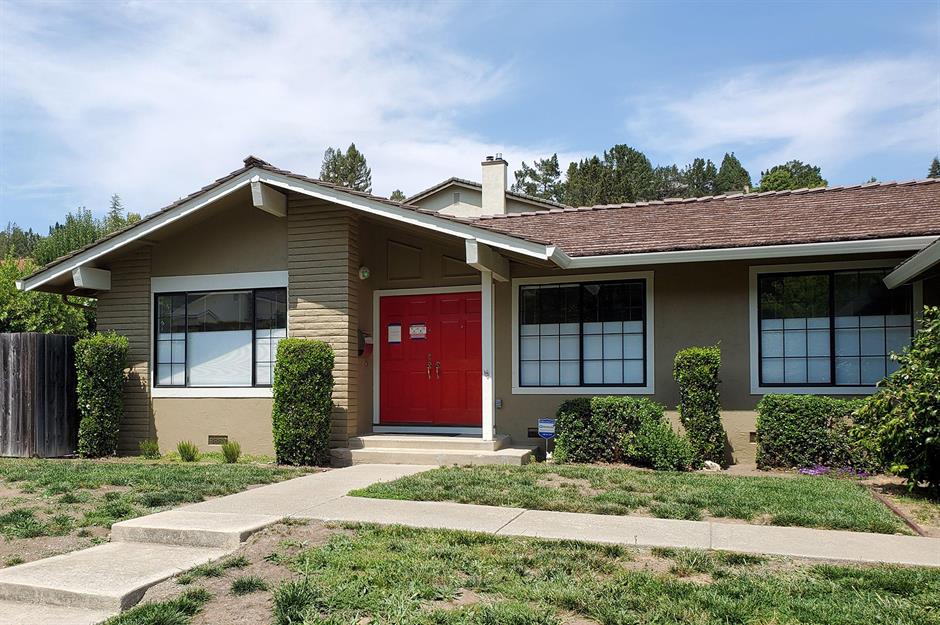
As the millennium dawned and influences became global thanks to the rise of the internet, new styles were afoot in the average house. It was the era that climate change and our carbon footprint went from being political to social concerns, and eco house design reflected that with sustainable building methods and a focus on renewable energy.
The financial crash of 2008 also put a sudden halt to the property development boom and saw a return to people buying houses as homes rather than investments.
2000s: the living room
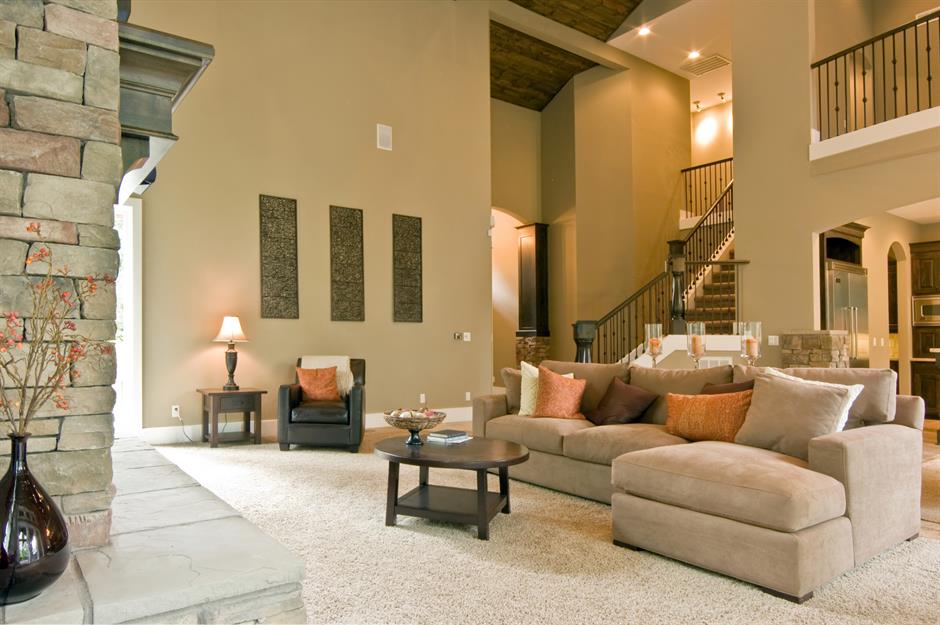
In the 2000s, beige, the neutral of choice that's been replaced by light gray in recent years, showed no signs of budging.
This living room has a beige carpet and sofas, and warm taupe walls with chunky wooden furnishings. The open-plan layout is still sought after, and the couch faces a fireplace rather than a huge TV.
2000s: the kitchen
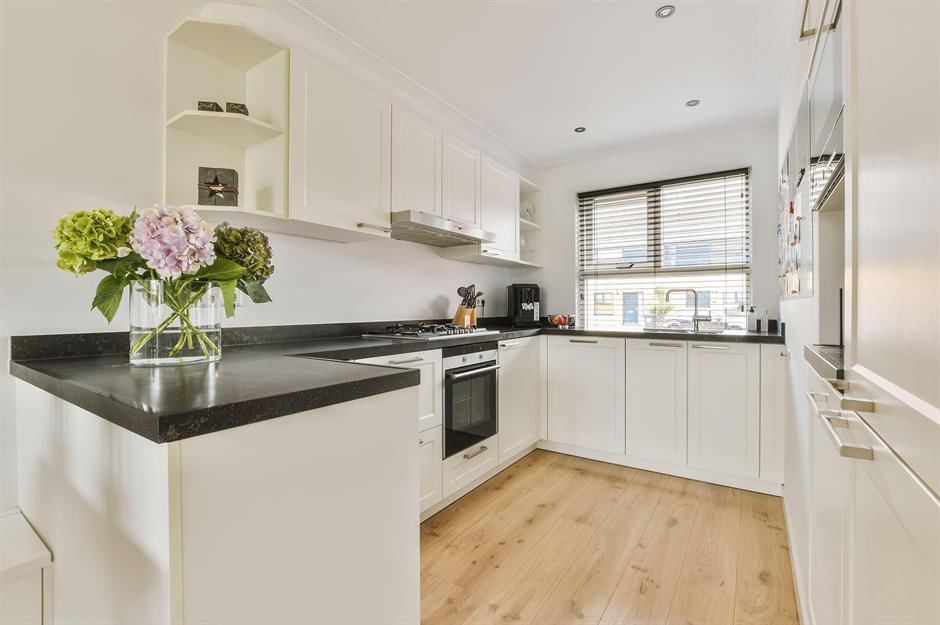
A classic kitchen style from the 2000s, white cabinets team with black shiny worktops and stainless steel appliances in this traditional scheme. Pendant lights above islands, usually in triplicate, became increasingly popular and are still a common design trend today.
By now, the rise of the laminate wood floor was well underway, featured here in warm, variated tones to mimic the real thing.
2000s: the bathroom

When it comes to bathrooms, Tuscan-inspired décor was all the rage in this decade, with limestone tiles, ornate lighting, and brown and bronze accessories.
Tiled dado rails were a popular pick too, combined with a tiled frieze to add to the Italian villa effect.
2000s: the bedroom

Moving on from the 'themes' that were so popular in the 1990s, bedrooms still continued to be where we were at our most adventurous when it came to decorating.
The rise of 'cottage-core' and 'shabby chic' rooms saw us adding whitewashed tongue-and-groove cladding back onto our walls, but with more refinement than in previous decades.
Feature walls were also popular, with statement wallpapers often put behind the bed. The rise of upcycling also saw more homemade items reappearing. We can't wait to see what's next!
Loved this? Step inside these time capsule homes of yesteryear.
Comments
Be the first to comment
Do you want to comment on this article? You need to be signed in for this feature